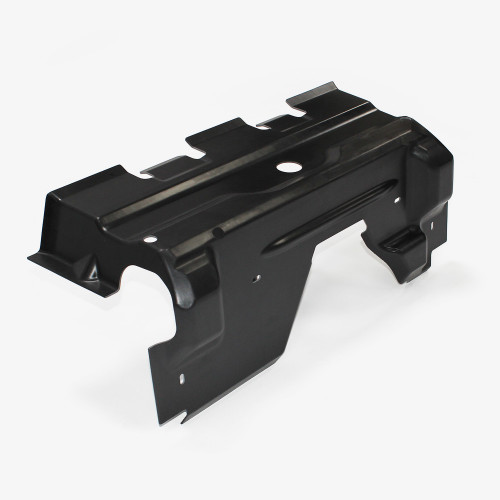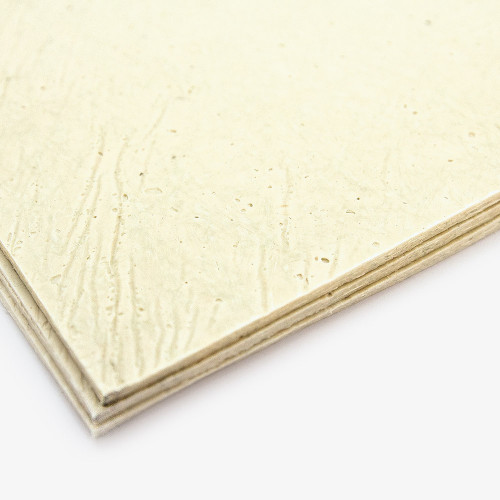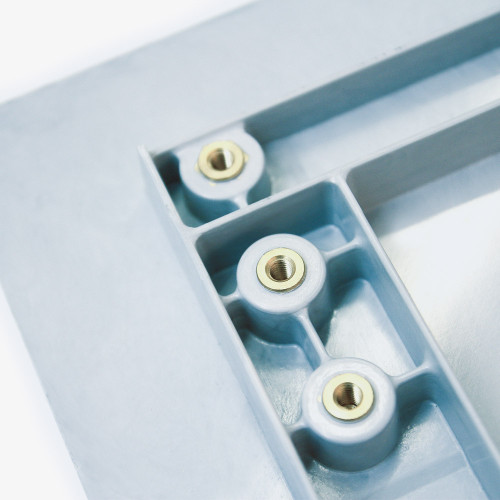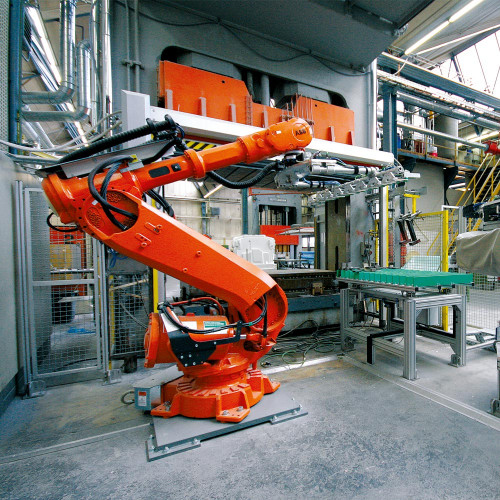
Engine and transmission cover made of low-density SMC

SMC semi-finished product during the first processing step

Threaded bushings integrated into the SMC semi-finished product

Computer-aided SMC component manufacturing
Fiber-reinforced plastics enable lightweight products with high-quality surfaces combined with first-class mechanical properties. This makes them an important class of materials, for example in automotive engineering, rail vehicle construction, boat building, aircraft construction, electrical engineering or even in the sporting goods sector. Glass fiber-reinforced thermosets play an important role here.
Inserts such as fastening elements can be inserted into the mold and thus already integrated during the production of the plastic. SMC hot stamping is thus a cost-effective process for precise component manufacture.
All-rounder SMC
One secret of SMC’s success is not only the variety of available matrix resins and fiber reinforcements, but also the variable formulation of its other components. Depending on the requirements profile for the molded part, a variety of additives can be incorporated in addition to the basic mixture of resin, fiber material, mineral fillers and hardener. This makes it possible to achieve very different molded part properties.
For example, to meet the high fire protection standards for rail vehicles, aluminum hydroxide is added to flame-retardant formulations. This makes the system self-extinguishing – at a temperature of 200 degrees Celsius, the compound splits off water. If, on the other hand, impact strength is to be increased, polymer or cellulose fibers are sometimes used.
Another advantage of SMC is that its coefficient of thermal expansion is similar to that of aluminum or sheet steel. This distinguishes the thermoset material strongly from thermoplastics, for example. SMC components can therefore be combined well with steel components – without problems with the gap dimension.
The bottom line is that SMC has a long list of positive properties, ranging from low specific weight, high-quality surface finish, high strength, high weathering resistance, chemical and temperature resistance to great freedom of design – and all of this with high dimensional accuracy that can be achieved with tools.
Added to this are relatively short processing times; press cycles of just a few minutes can be achieved. This makes SMC technology an economical solution for medium series sizes in the range from less than 5,000 to 80,000 units per year (based on a mold set).
Wide range of shaping options
In contrast to flat starting materials such as sheet metal or plastic sheet material, shaping with SMC is much easier to adapt to technical and design requirements. Wall thickness differences, ribs, cams, recesses – all these are possible using press technology. Fastening elements such as threaded bushings can be pressed in without difficulty. Wall thicknesses from around 2.5 millimeters upwards can be realized.
With SMC, engineers and designers thus have a wide range of options for designing parts with low material input that are of high technical quality, can be produced economically and are attractive in shape.